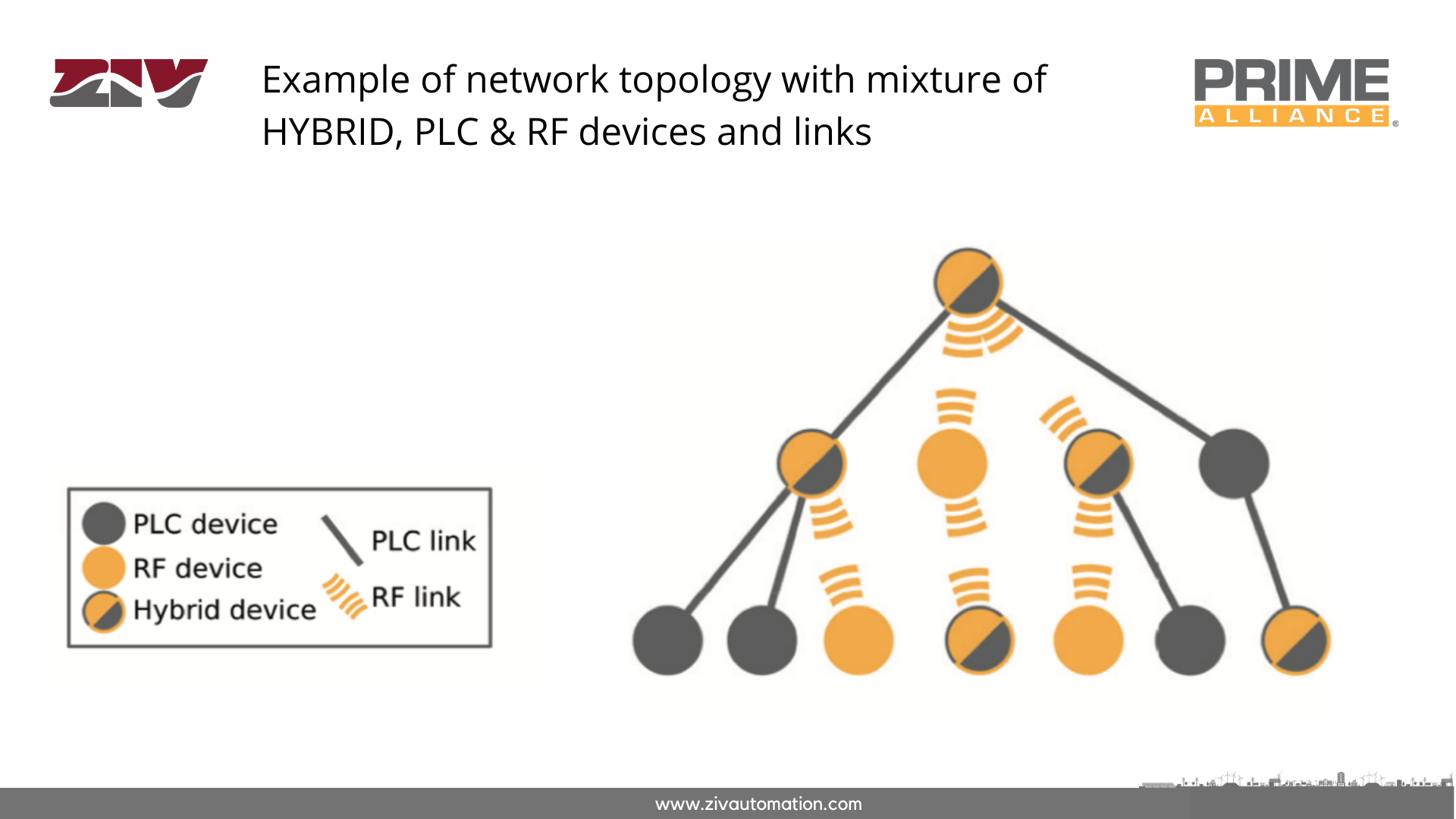
Power line communication (PLC) has long been considered the most suitable and natural technology to provide the needed telecoms performance, even in complex underground electricity grids. But what do you do when it’s not?
Alfredo Sanz Molina (Technical Fellow on Smart Energy Systems and software at Microchip Technology and Board member PRIME Alliance) and Asier Llano Domínguez (R&D Manager at ZIV Automation), explore together PRIME Hybrid solution that combines PLC and RF communication technology.
>>Listen here the #SEI – Smart Energy International podcast
PRIME hybrid solution combines PLC and RF
*This article was originally published in Smart Energy International Issue 5-2020
PRIME Alliance is committed to dealing with the communication challenges of the smart grid for the low voltage (LV) network with interoperable and open technologies. The power line communications (PLC) channel has proven to be effective for communications on the low voltage network. Radiofrequency (RF) technologies have also proven to be good solutions for the same challenge. Both technologies have their strong points and the PRIME Alliance has merged them to provide a hybrid solution, building a stronger and more versatile communications network.
The merging of both technologies is performed by integrating both physical (PHY) layers into the same medium access control (MAC) layer. A hybrid node can use both physical layers and maintain connectivity to neighbour nodes with different technologies. PLC protocols are not changed, making the integration fully backwards compatible, providing compatibility with existing PLC-only devices. The same solution does not only integrate hybrid and PLC-only devices, but also fully supports RF-only devices, enabling further applications.
One of the key benefits of a hybrid solution is extension of coverage.
Power line communications (PLC) have many properties that make it a successful technology. The signal flows through the low voltage network for long distances, reaching underground locations, easily crossing metallic structures such as cabinets or reinforced concrete. The greatest challenge is the variability of the conducted noise and impedance. Even if most of the network provides good communication properties, some points of the network may not reach the expected performance due to unavoidable noise sources.
RF communications have also many properties that make it an appropriate solution. The strong regulation of emission levels makes this technology work in an environment of controlled noise. On the other hand, the attenuation is very variable given the location of the devices and the surrounding materials.
While both technologies have proven successful, it is not feasible to guarantee full coverage with one technology or the other. By combining both technological approaches virtually full coverage can be obtained. As long as any link of a topology has coverage either through PLC or RF, the communication network will extend its coverage further.
The combination of both outperforms the separated technologies because the hybrid solution will choose the more appropriate technology for each link.
The coverage extension is a strong point of the hybrid technology, but the main benefit is that it enables new applications. The hybrid solution opens the door to further applications that are not easily addressed with one or the other technology alone.
By using the PLC channel, the devices can provide information that is valuable for the discovery of the topology of the electrical network in phase and line. By using the RF interface, the devices can be used in low power scenarios, such as communication during last gasp or even working on batteries for gas and water metering.
As an example, the hybrid technology can combine network topology resolution with the last gasp functionality and help with the solution of local low voltage power cuts.
The diversity of applications required for the smart grid and the variety of communication environments can only be addressed with a set of different technologies working harmoniously.
The PRIME Alliance is providing an open and interoperable hybrid solution that is capable of combined and extended coverage and enables further applications.
About the author
Asier Llano has been an active member of the Technical Working Group of the PRIME Alliance since its foundation. He manages the Research and Development of the Metering Business Unit at ZIV. He has been contributing to communications technology in the energy sector for more than 15 years.
About PRIME Alliance
Membership includes utilities, research institutes, chipset and software companies, smart meter and data concentrator vendors, integrators and consultants. PRIME Alliance has emerged as a proven, open, ITU-T and IEEEstandardised technology that makes smart grids real.
About ZIV
ZIV Aplicaciones y Tecnologia is a company that designs, manufactures, and supplies, among other goods, equipment and cabinets for the protection and control of electrical substations. A technology partner with the knowledge, experience, and resources necessary to deliver solutions that provide intelligence, resilience and reliability to electrical systems worldwide

